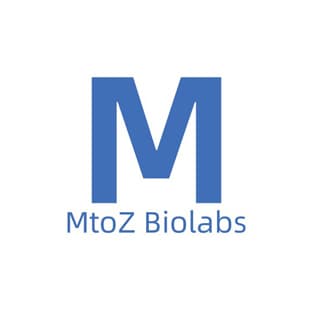Molecular Biology
Molecular biology, or the study of living organisms on the molecular level, is closely related to molecular genetics, the study of DNA sequences and how they are controlled and expressed. Molecular biology contributes to clinical medicine, immunology, genomics, proteomics, drug discovery and development, agriculture, food & beverage manufacturing, biofuels processing, ecology and environmental protection.
Laboratory instruments for molecular biology include microplate scanners and readers; in vivo imaging systems; luminometers; gamma counters; radio flow detectors; ion chromatography and HPLC systems; LC/MS purification systems; chemiluminescence imaging systems; gel imaging systems; Raman spectrometers and spectrophotometers for microscopes; UV-vis-NIR microscopes; confocal microscopes; and inverted microscopes.
Equipment and supplies for molecular biology include pH, ion and conductivity meters; thermal cyclers for PCR; pipettes, racks and tips; thermoregulators; water baths and shakers; block heaters and icers; thermal cyclers; homogenizers; incubators; cryogenic freezers; DNA and protein sequencing software; lentiviral shRNA libraries; centrifuges; laminar flow hoods; heat seals, storage plates and thermal sealers; PCR plates and automated PCR systems; crosslinkers; LC columns, heaters/chillers and autosamplers; and LIMS software.
Consumables for molecular biology include plasmid vectors; E. coli cloning strains; bacterial artificial chromosome (BAC) kits; endotoxin detection kits; oligos and gene fragments; PCR assays; primer pairs; vector cloning services; cell culture media; growth containers; transfection reagents; DNA purification kits; DNA, RNA and protein extraction kits; mounting media; staining kits; lectins; antibodies; reverse transcriptase; stabilizers; bar-coded tubes; and injection services.
Browse the product range below or simply use the Search Tool above to help find the best products.
Once you have found a product, complete a ‘Get a Quote’ form and you will get the best price!
Showing 24 of 825 results
Product A-Z
Latest promotions
Spend less time on DNA cleanup so you can do more science. The MSB Spin PCRapace is the fastest way to purify your DNA from PCR, restriction digestion, and...
New brilliant antibodies, and new lower prices!For flow cytometry reagents in general, \"bright is better.\" The violet-excitable BD Horizon™ BV421 and...
As an incentive to qualify our BSA, we are offering a 20% discount when you purchase your first 100g, 500g or 1000g of any grade of Bovine Serum Albumin....
It is not every day that you are given something for nothing. We are giving away additional spectrophotometer software.Cecil Instruments have enhanced the...
We're so sure that you'll prefer Cayman Assay kits over your present brand that we're willing to give you a free assay kit to prove it!
10% Discount on 2 Rabbit Polyclonal Antibody Service. With over 20 years experience, SDIX has developed into the premier US custom antibody producer,...
For the past decade scientists have extensively used ATS secondary toxin conjugates to make their own targeted toxins for in vitro use.The ability to combine...
Did your supplier increase the price of Fetal Bovine Serum? Did they substitute the US Origin with USDA? Well say no more! Innovative Research is still...
Bulk Cytokines with Custom Vialing.20 - 50% off cytokines, growth factors, chemokines and more...For a limited time Cell Sciences is offering substantial...
Jenway’s 73 series spectrophotometer range provides four models with a narrow spectral bandwidth of 5nm and an absorbance range of –0.3 to 2.5A,...
Are you planning to have a customised antibody made for your research?Since 2000, Everest has been producing a catalog containing thousands of affinity...
Top suppliers
United States Biological
230753 products
Carl Zeiss Microscopy
27 products
Promega Corporation
11 products
Panasonic Healthcare Company
5 products
Life Technologies
1 products
Nikon Instruments Europe
11 products
Olympus Europa Holding GmbH
3 products
Leica Microsystems, Inc.
10 products
GE Healthcare Life Sciences
2 products
Tecan Trading AG
19 products
Beckman Coulter, Inc.
1 products
AB SCIEX
3 products
BD (Becton, Dickinson and Company)
1 products
RANDOX TOXICOLOGY
5 products
Randox Food Diagnostics
6 products

























